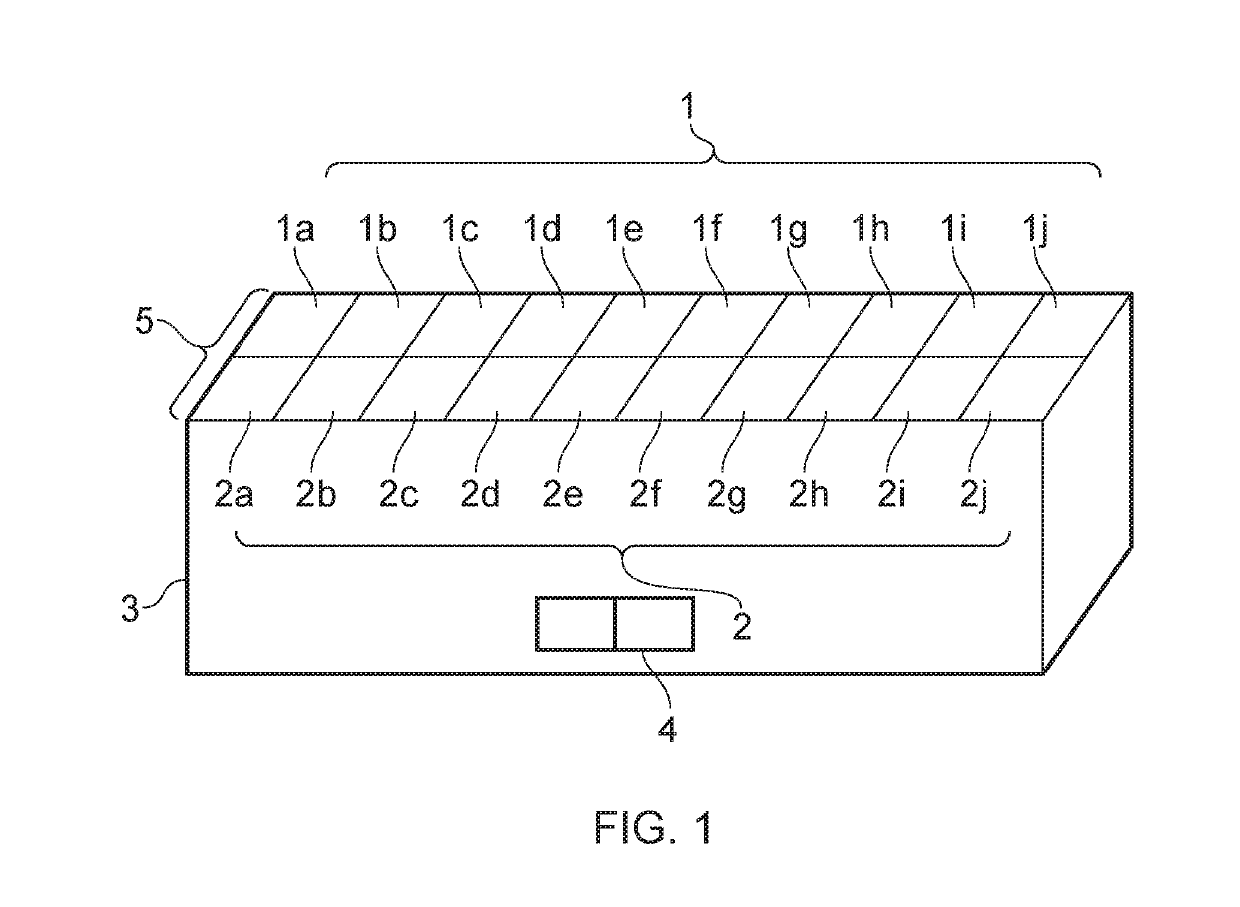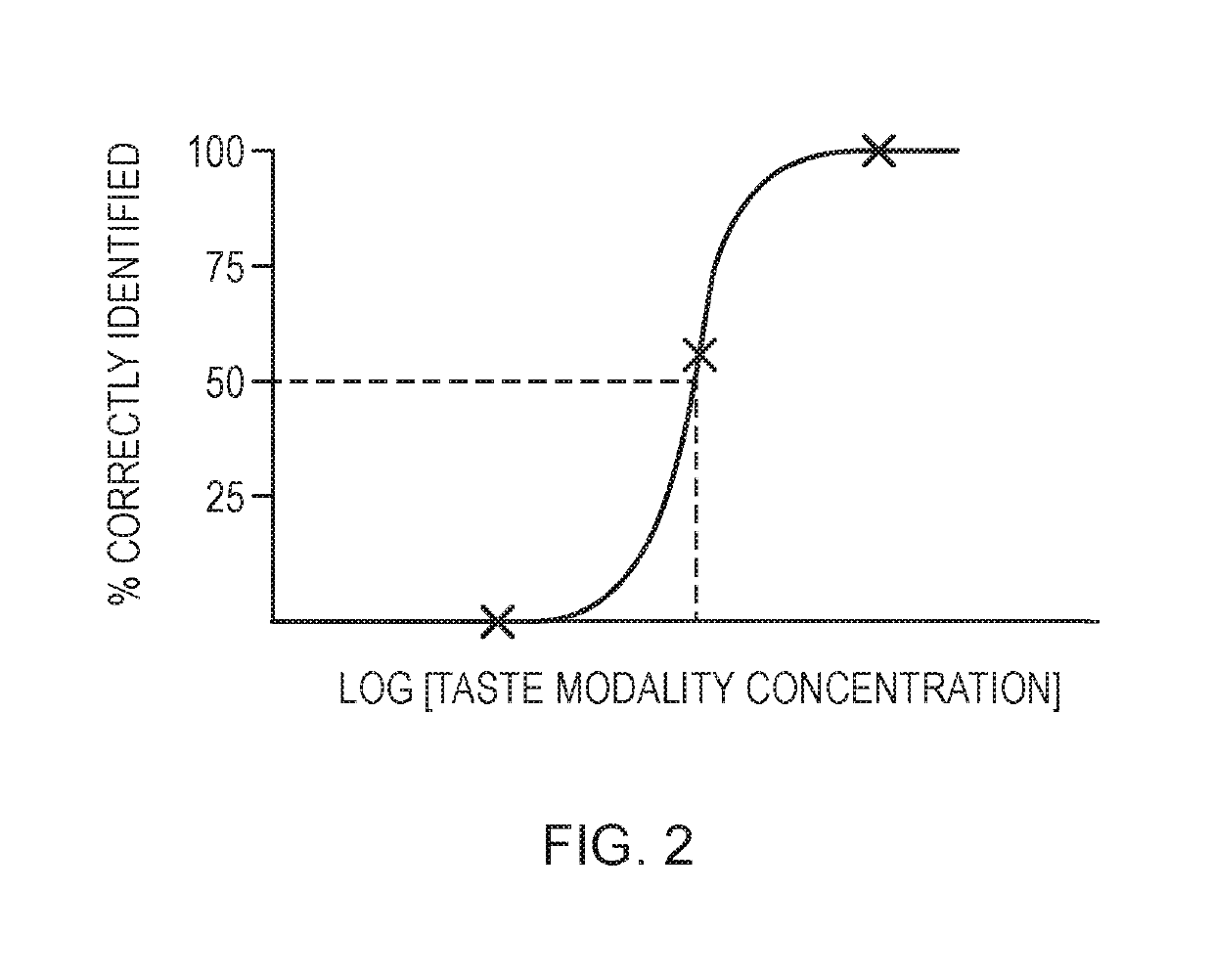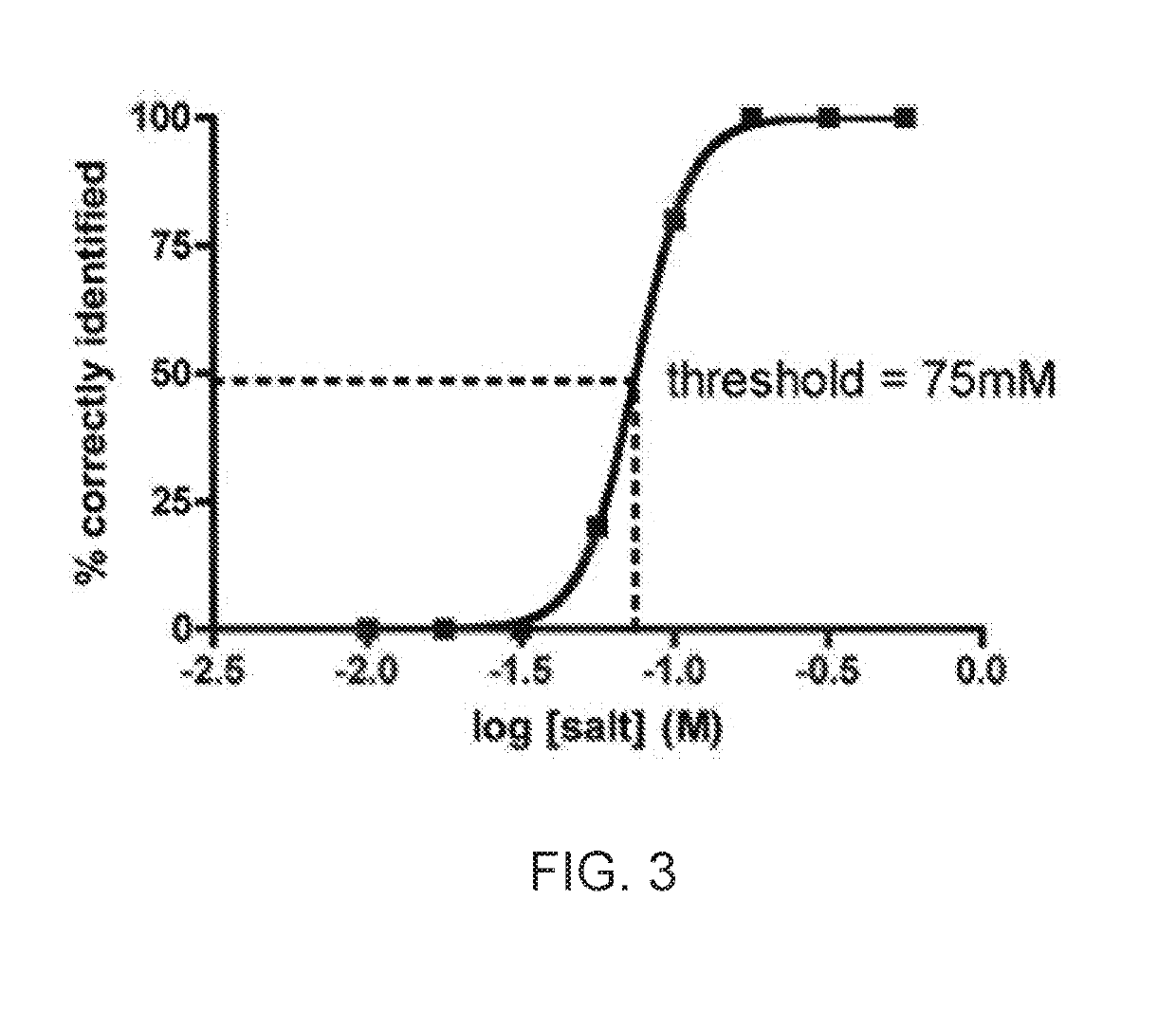Method of diagnostic relevance based on taste recognition
a technology of diagnostic relevance and taste, applied in the field of diagnostic relevance based on taste recognition, can solve the problems of not being able to draw conclusions as to whether, the diagnosis of clinical depression is currently problematic, and doctors are unable to ascertain whether a patient presenting with depressive symptoms is biologically depressed
- Summary
- Abstract
- Description
- Claims
- Application Information
AI Technical Summary
Benefits of technology
Problems solved by technology
Method used
Image
Examples
example 1
ognition and Perception in Healthy Controls and Individuals with Refractory Depression
[0163]Taste recognition thresholds for salt and sweet taste modalities were calculated for healthy controls and individuals with refractory depression as per the materials and methods. The results are shown graphically in FIG. 4. Referring to FIG. 4, the salt and sweet taste recognition thresholds were significantly higher (i.e. less sensitive) in individuals with refractory depression compared with healthy controls. Statistical significance was determined using Mann Whitney U tests.
[0164]Other taste perceptual measures, including intensity and pleasantness / unpleasantness of taste, were measured for salt and sweet taste modalities in healthy controls and individuals with refractory depression as per the materials and methods. The results are shown graphically in FIG. 5. Referring to FIG. 5 (a), salt intensity (i.e. how strong the taste appeared to be) was significantly increased in individuals with...
example 2
ognition Thresholds in Healthy Controls and Individuals with Untreated Clinical Depression
[0166]Taste recognition thresholds for salt, sweet, sour and bitter taste modalities were calculated for healthy controls and individuals with newly diagnosed and previously untreated clinical depression as per the materials and methods. The results are shown graphically in FIG. 6. Referring to FIG. 6, salt, sweet, sour and bitter taste recognition thresholds were all significantly higher (i.e. less sensitive) in individuals with untreated clinical depression compared with healthy controls. Statistical significance was determined using Mann Whitney U tests.
[0167]This example demonstrates that in individuals with newly diagnosed and previously untreated clinical depression, taste recognition thresholds to the four principal taste modalities (salt, sweet, sour and bitter) are significantly higher (i.e. less sensitive).
example 3
ognition Thresholds in Individuals with Untreated Clinical Depression after Acute Antidepressant (SSRI, Paroxetine) Challenge
[0168]Clinical efficacy of antidepressants against the symptoms of clinical depression may take several weeks to develop. In this example, taste recognition thresholds were calculated in individuals with newly diagnosed and previously untreated clinical depression before and two hours after an acute paroxetine challenge as per the materials and methods. The results are shown graphically in FIG. 7 (n=47, only individuals in whom both measurements were made included; 7 people were excluded as only baseline measurements were made). Referring to FIG. 7, the majority of taste recognition thresholds for each of the salt, sweet, sour and bitter taste modalities were reduced after the acute paroxetine challenge compared with baseline measurements.
[0169]The taste recognition thresholds of individuals with newly diagnosed and previously untreated clinical depression for...
PUM
 Login to View More
Login to View More Abstract
Description
Claims
Application Information
 Login to View More
Login to View More - R&D
- Intellectual Property
- Life Sciences
- Materials
- Tech Scout
- Unparalleled Data Quality
- Higher Quality Content
- 60% Fewer Hallucinations
Browse by: Latest US Patents, China's latest patents, Technical Efficacy Thesaurus, Application Domain, Technology Topic, Popular Technical Reports.
© 2025 PatSnap. All rights reserved.Legal|Privacy policy|Modern Slavery Act Transparency Statement|Sitemap|About US| Contact US: help@patsnap.com



